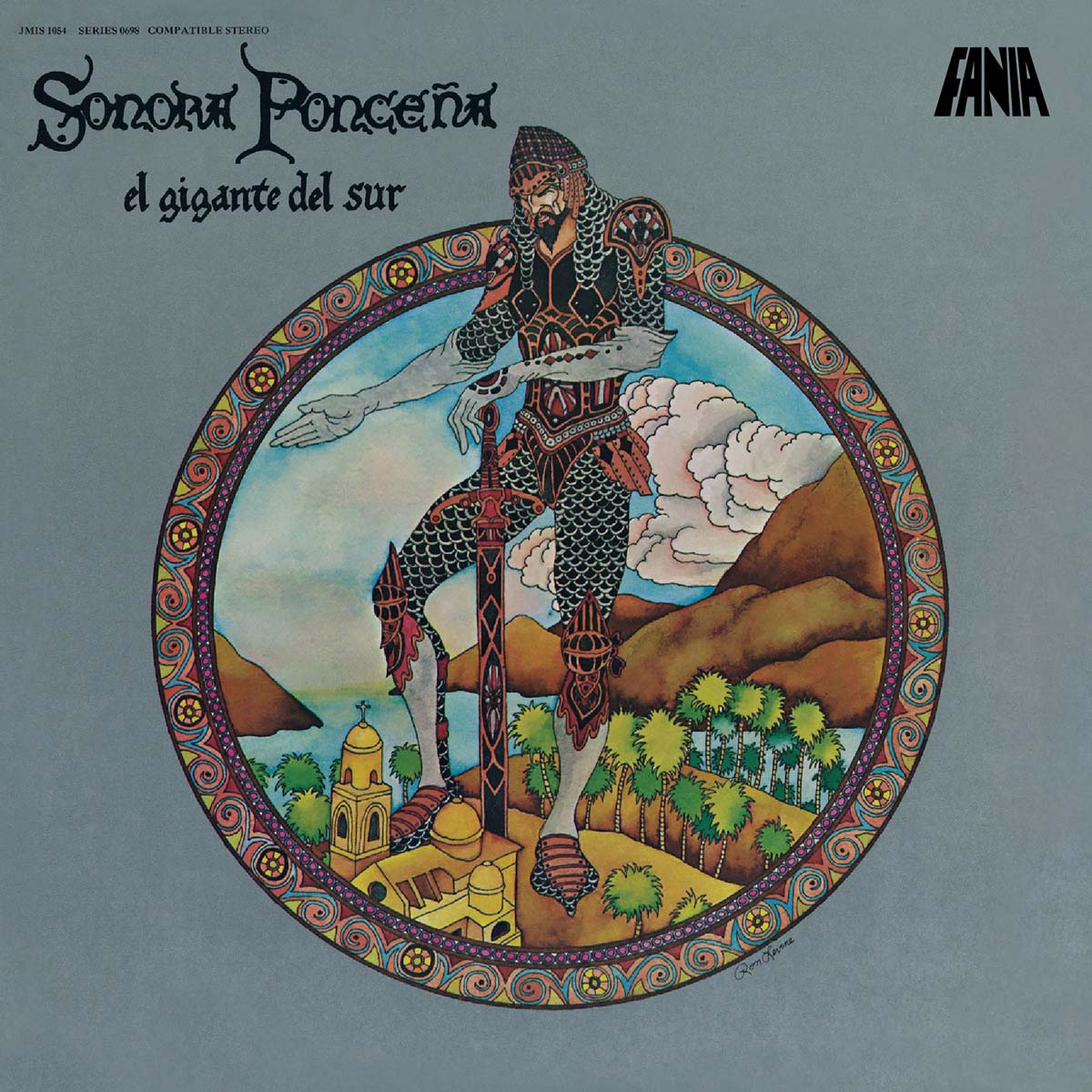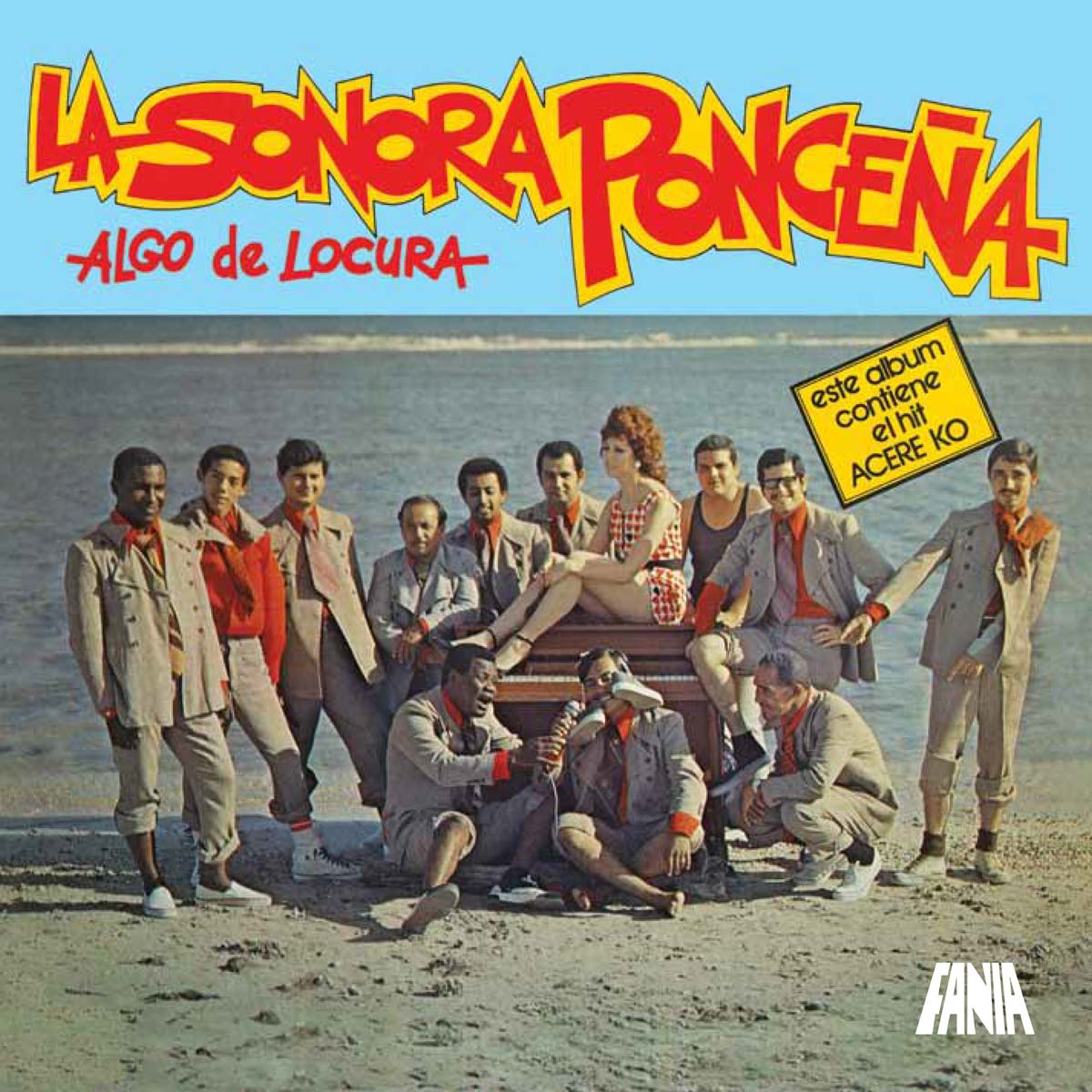Although Tito Puente (1923-2000) recorded more than 100 albums in his long career, “Homenaje A Beny” stands out as the recording that gave him the first of his five Grammy’s. From the late 1940’s to the 1960’s, Puente fueled the great mambo era and helped to popularize the cha-cha. By 1978, Puente had already been proclaimed the King of Latin …
CUBA Y PUERTO RICO
“Cuba y Puerto Rico son…de un pájaro las dos alas…” “Cuba and Puerto are… the two wings of one bird…” These prolific words were written by the Puerto Rican poet and revolutionary Lola Rodriguez de Tio in 1893 and speak to the unique cultural, musical and political relationship of the two islands. In 1966, two titanic musical forces from these …
CE’ MAGNIFIQUE
From fiery mambo jams and hypnotic percussion descargas to silky jazz sessions and torrid bolero interludes, Tito Puente did it all. The Nuyorican timbalero’s thirst for experimentation was limitless. And even though he left behind a legacy of over 100 recordings, Puente never made a bad album. The collection you hold in your hands is not as widely celebrated as …
ALGO ESPECIAL PARA RECORDAR
Released in 1972, Algo Especial Para Recordar was the last in a series of excellent LPs that the late Cuban diva Celia Cruz and Nuyorican timbalero Tito Puente recorded for the Tico label between the mid-’60s and the early ’70s. Just like previous Celia and Tito efforts like Cuba y Puerto Rico Son… (1966) and Quimbo Quimbumbia (1969), however, the …
TITO GOMEZ – LA HERENCIA
A contemporary of Hector Lavoe, Papo Lucca and top arranger José Febles, Gómez was born in less-than-advantageous conditions in the former Juana Díaz sector of Santo Domingo (not too far from where the newer Urbanización Santo Domingo now stands, close to the Jacagüas River). Similar to other artists of the time, he first earned his living as a shoeshine boy …
INTO THE EIGHTIES
INTO THE 80’S TIPICA 73 This album marks the end of a musical era. Despite the fact that Típica 73 continued to perform in various combinations, this was the last studio recording that the band made. On this recording, a number of interesting phenomena foreshadow the future of this musical group. First, Típica continued to record songs by Cuban composers, …
Charangueando
In his liner notes for the original LP, Sonny Bravo wrote that the Típica 73 repertoire and arrangements heard on this recording actually came from informal Monday night jam sessions at a New York club. “There were no charts then,” wrote Bravo describing the band’s collective arranging style. We relied mainly on old charanga standards. I would start off with …
JUBILEE
The history of La Sonora Ponceña begins in Ponce, Puerto Rico. La Ponceña started with just two trumpets and no piano and is now an international musical institution with an immediately recognizable, clear, and pronounced four trumpet sound. It is directed by one of the most important piano players in Latin Music: Papo Lucca. What do you do when you …
FUTURE
When Puerto Rico’s most dynamic and popular tropical orchestra released this 1984 recording, salsa was slipping into darkness, opaqued in clubs and on radio by the merengue craze swept in with the wave of immigrants coming into New York and Puerto Rico from the Dominican Republic. But you wouldn’t know it from Sonora Ponceña’s “Future.” As if predicting the yet …
FUEGO EN EL 23
The musical troupe hailing from Ponce, Puerto Rico, created by the venerable Enrique “Quique Lucca” Caraballo in 1954, evolved from the Conjunto Internacional, also formed by Lucca, in 1944. The group was joined by bongo player Antonio “Tato Santaella,” as well as trumpeter and guitarist Filiberto Ojeda Rios, who later gained fame and recognition as the trumpet master of the …
EXPLORANDO
In 1978, Mr. Quique Lucca and his son Papo faced the challenge of celebrating the twentieth anniversary of his Sonora Ponceña without its lead singer Luigi Texidor. Luigi, the niche santaisabelino who popularized such hits as Fuego En El 23, Acere ko, La Pobreza Y Yo, El Pío Pío and others, said goodbye to the orchestra with the LP El …
ENERGIZED
Bands such as La Terrífica, Conjunto La Perla, and more recently, La Clásica de Eric Rivera all ascended from the majestic city of Ponce, Puerto Rico also known as the Island of Enchantment. However, not one has delighted salsa fans with the consistency of Sonora Ponceña, known as La Querendona del Bailador and El Látigo del Sur. In 1979 the …
EL GIGANTE DEL SUR
Even though she has been denied the exposure and recognition enjoyed by Cuban divas such as Celeste Mendoza, La Lupe and Celia Cruz, Puerto Rico’s Yolanda Rivera is one of the most versatile singers in Afro-Caribbean music. Rivera recorded with La Terrífica, but it was with La Sonora Ponceña that she produced her best work. In 1977, El Gigante Del …
DETERMINATION
A departure from the aggressive, hardcore violent brass moñas and phrases that marked La Sonora Ponceña’s early style when singers Luigi Texador and Tito Gomez fronted the band that began doing covers, Determination elevates Puerto Rico’s oldest working orchestra into a more musically diverse realm while still being danceable. Much like its cover illustration that features a knight in armor …
DESDE PUERTO RICO A NUEVA YORK
When Sonora Ponceña released Desde Puerto Rico A Nueva York in 1972, the orchestra, led by keyboardist Enrique “Papo” Lucca, had yet to develop the visionary aesthetic that characterized future Ponceña masterpieces like Conquista Musical (1976) and El Gigante Del Sur (1977). It was on those two records that Lucca began experimenting intensely with the sound of electronic keyboards, as …
ALGO DE LOCURA
It is unthinkable that the third album by one of the most beloved salsa outfits of all time would have been overlooked for so long. La Sonora Ponceña’s first two LPs, Hacheros Pa’ un Palo (1968) and Fuego en el 23 (1969), were bona fide hits and established a powerhouse sound based around the virtuosic piano of their leader Papo …
A BAND AND ITS MUSIC
If you are already familiar with the magic of La Sonora Ponceña, then you know what this compilation has in store for you: over the span of 27 tracks, we have distilled the very essence of one of the jazziest, funkiest and most elegant orchestras ever to grace the landscape of Afro-Caribbean music. If, on the other hand, you are …
SIEMPRE SANTITOS
Angel Santos Vega (Santitos) Colón was born in Sabana Grande, Puerto Rico, in 1924, and raised in the city of Mayaguez where he began his singing career at age 16 when he joined the Frank Madera Orchestra. He subsequently honed his musical skills by working with local musicians like Lester Cole, El Trio Los Huastecos and well-known singer/bandleader Mon Rivera. …
THE LAST FIGHT
THE LAST FIGHT WILLIE COLON / RUBEN BLADES During an interview conducted years ago for the excellent Descarga.com website, Rubén Blades was asked about which of the six albums that he had recorded with Willie Colón was closer to his heart. The Panamanian singer’s answer was quite eloquent: “I think all, actually, except for The Last Fight,” he said. This …
METIENDO MANO
I remember just as if it was yesterday that the 8-track cartridge of Metiendo Mano (Fania 500) arrived at record stores before the single “Pablo Pueblo” was played on the radio. I bought my copy at Joyería Danilú in Canóvanas, Puerto Rico, for only $4.99. In 1977, I was one of the thousands of salseros who approached Colón’s new work …






















